Rare indoor plants are like treasures waiting to be discovered, each possessing unique features and characteristics that set them apart from the ordinary. These elusive botanical wonders captivate plant enthusiasts with their scarcity and beauty, offering an opportunity to create truly exceptional indoor gardens.
From variegated foliage to unusual shapes and colors, rare indoor plants add an element of fascination and intrigue to any home or space.
Different Types of Rare Indoor Plants
Variegated Arrowhead Vine
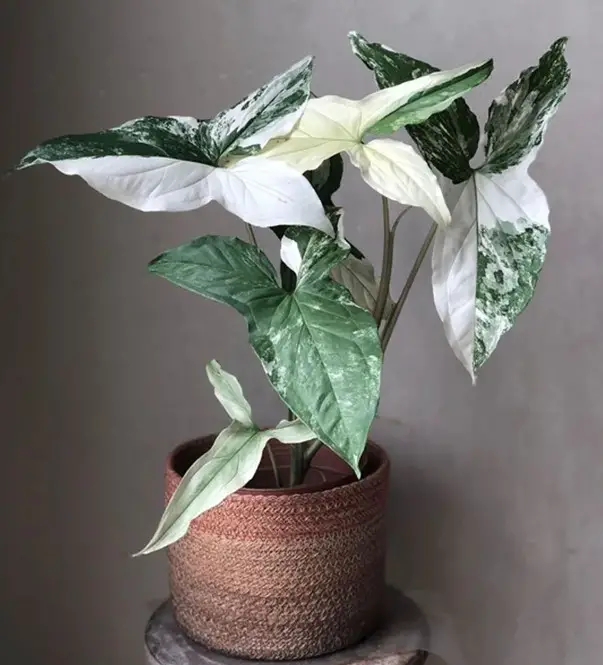
The Variegated Arrowhead Vine, scientifically known as Syngonium Podophyllum Albo Variegatum, is a standout in any indoor space. With its rapid growth and low-maintenance nature, it’s a rare gem among houseplants.
Sporting thin arrow-shaped leaves in shades of green with white marbling and pink-tinted stems, it adds a touch of magic to any space. Thriving in partial sun or bright, indirect light, it requires weekly watering and frequent misting to flourish.
Philodendron ‘Golden Dragon’
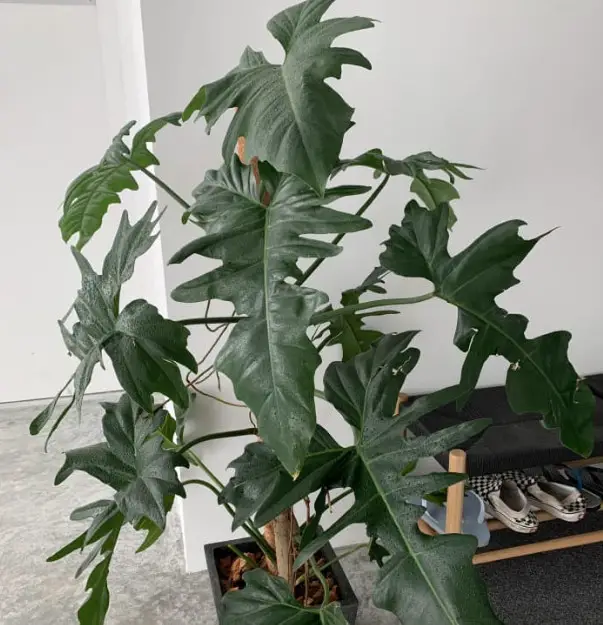
The Philodendron ‘Golden Dragon’, a Thai hybrid of Philodendron Bipennifolium, is a wonderful addition to any indoor garden. Its distinctive wavy arrow-shaped leaves boast stunning variegation, making it a favorite among plant enthusiasts.
Thriving in bright indirect light, this climbing plant requires watering when the soil is mostly dry, allowing it to flourish and display its magnificent foliage. As a lover of unique leaf shapes, you’ll find the ‘Golden Dragon’ Philodendron a delightful treasure in your collection.
Monnierara Millennium Magic ‘Witchcraft’
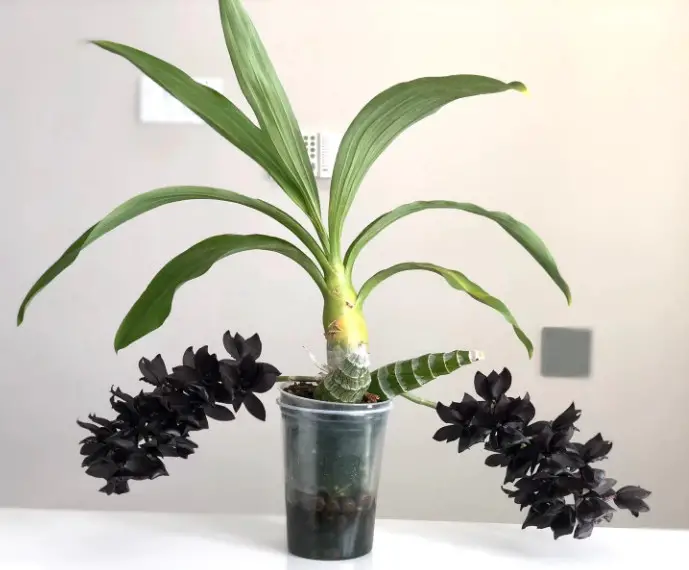
The Monnierara Millennium Magic ‘Witchcraft’ orchid is celebrated for its remarkably dark blooms, ranking among the blackest orchids known. This hybrid, born from Catasetum, Cycnoches, and Mormodes orchid families, produces flowers with deep purple, black, blue, and brown hues, exuding a waxy texture.
Despite its enigmatic appearance, the blooms emit a subtle, pleasing fragrance upon opening. Abundant heat, water, and fertilizer ensure this ornamental plant becomes a mesmerizing focal point wherever it’s displayed. Thriving in medium light, it demands heavy watering during the growing season for optimal growth.
Red Butterfly Wing Plant
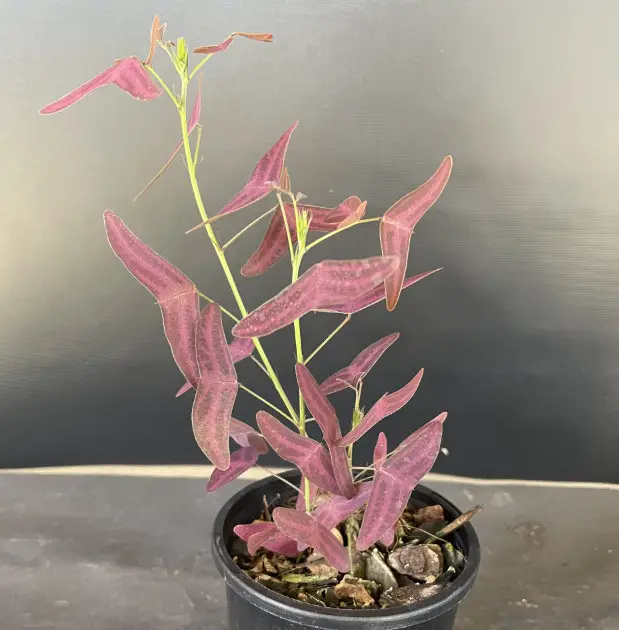
The Christia vespertilionis, commonly referred to as the Red Butterfly Wing Plant or Mariposa Plant, stands out as one of the most striking rare houseplants globally. Its triangular, purplish-red leaves bear a remarkable resemblance to butterflies in flight.
Belonging to the Fabaceae (Leguminosae) family, it thrives in medium light conditions and requires weekly watering, maintaining soil moisture without becoming waterlogged. This rare plant brings unparalleled beauty to your interior space.
Variegated Billietiae
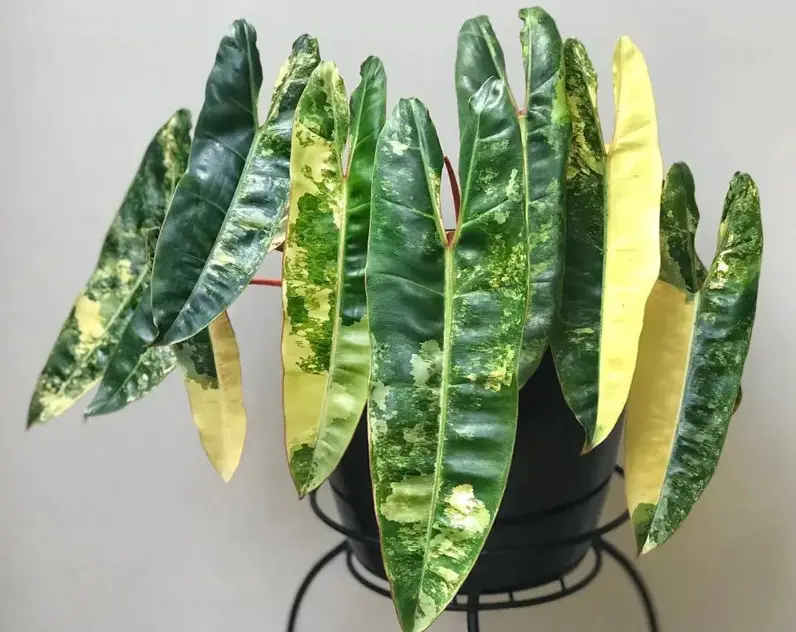
The Variegated Philodendron Billietiae is a striking vine climber, adorned with glossy, elongated heart-shaped leaves and vibrant orange-red stems. Surprisingly, despite its rarity, this show-stopping plant is easy to maintain.
While indoors, its leaves remain manageable in size, but in its natural habitat, they can grow up to three feet long. Thriving in bright, indirect light, it requires watering twice monthly or when the top few inches of soil are completely dry.
Philodendron Pink Princess
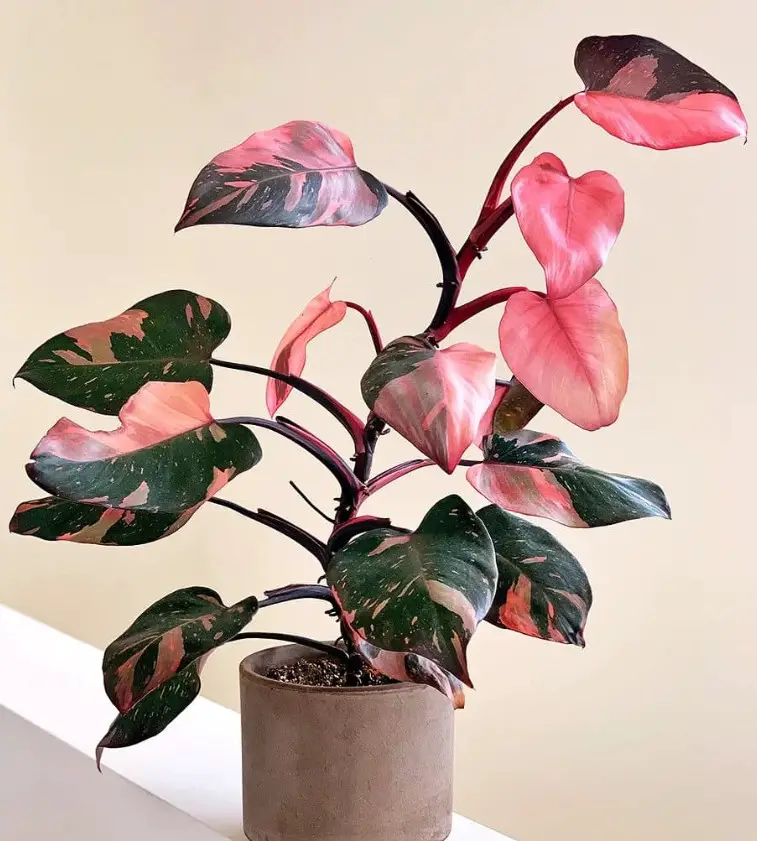
The Philodendron Pink Princess has become an icon on Instagram, coveted for its stunning heart-shaped leaves adorned with streaks of bubblegum pink and rare black hues. However, its allure often comes with a hefty price tag, reaching triple digits.
The demand for this photogenic plant has skyrocketed in recent years due to its unique beauty. Thriving in bright, indirect light, it requires watering when the top 1-2 inches of soil feel dry.
Twisted Cactus

The Cereus Forbesii Spiralis, also known as the Twisted Cactus, earns its name from its distinctively twisted appearance. With its cool and funky demeanor and blue-green coloration, it adds a unique charm to any collection. This cactus occasionally produces delicate white or pink flowers.
Easy to care for, it’s an excellent choice for beginners, thriving in a cactus soil mix with warm temperatures, little water, and bright light. It prefers bright light with some indirect sunlight once established, but not too much, and should be watered sparingly once the soil has dried out, as it is drought-tolerant.
Tricolor Arrowhead Plant
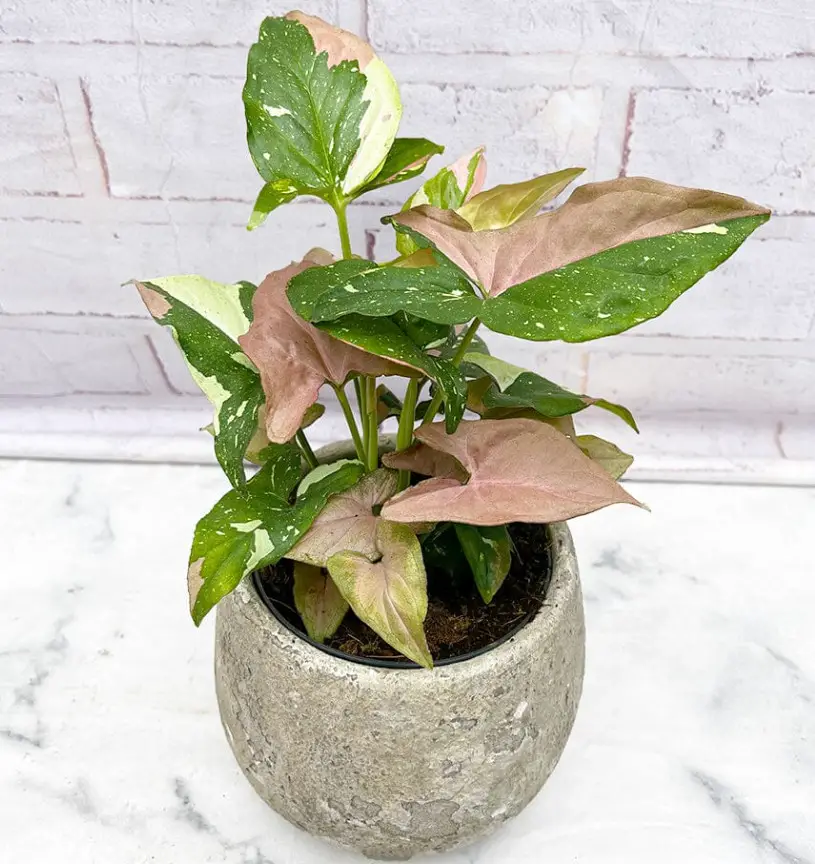
The Syngonium Podophyllum Red Spot, or Tricolor Arrowhead Plant, is renowned for its distinctive variegated leaves, adorned with pink, green, and white spots. With maturity, it develops graceful vines, ideal for indoor hanging baskets.
Belonging to the Araceae family, it thrives in medium-light environments, though it can adapt to low-light conditions. Caution is warranted, as exposure to more than three hours of direct sunlight may harm its delicate foliage. Regular weekly watering sustains its health.
White Variegated Monstera
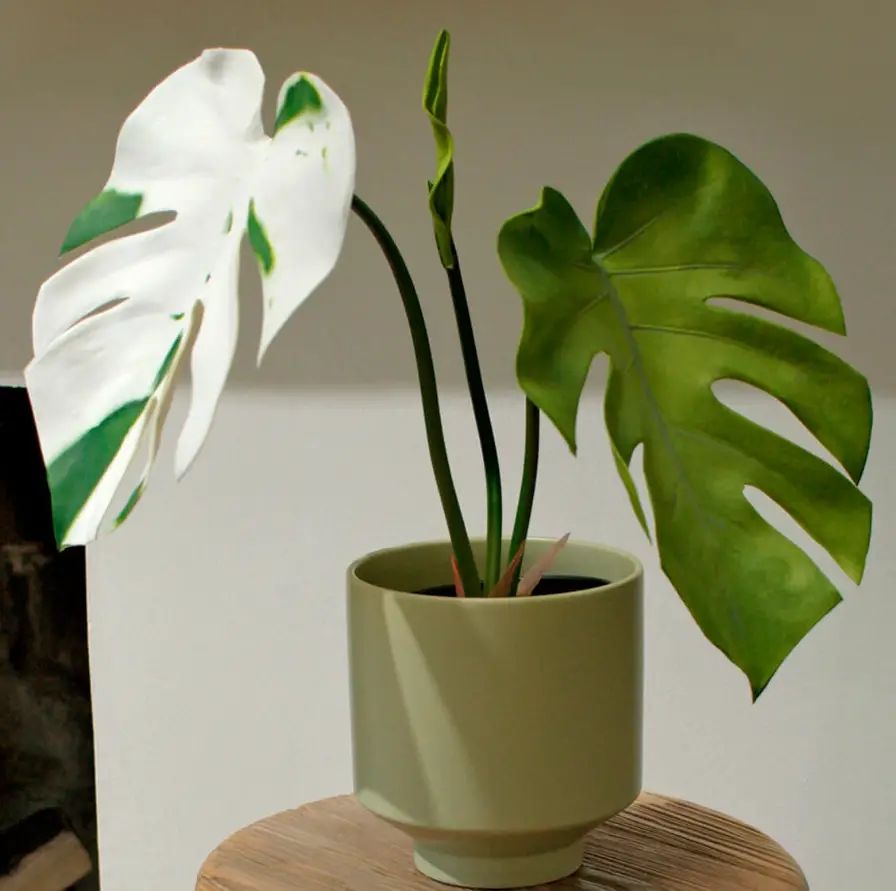
The White Variegated Monstera, scientifically known as Monstera Deliciosa Albo Variegata, stands out as one of the most stunning varieties of monstera plants, thanks to its striking white marble leaves. Resembling its Swiss cheese plant relatives, it boasts easy maintenance and growth. The unique perforations in its leaves and the vibrant contrast of colors not only add beauty but also infuse any space with a tropical ambiance.
However, acquiring this plant variety can be challenging due to its rarity. The marbled appearance arises from a mutation in chlorophyll formation, resulting in fewer plants with delicate white variegation. They demand more sunlight, albeit indirect, and grow at a slower pace compared to their green counterparts. These factors contribute to their scarcity in the market.
Variegated Monstera ‘Thai Constellation’
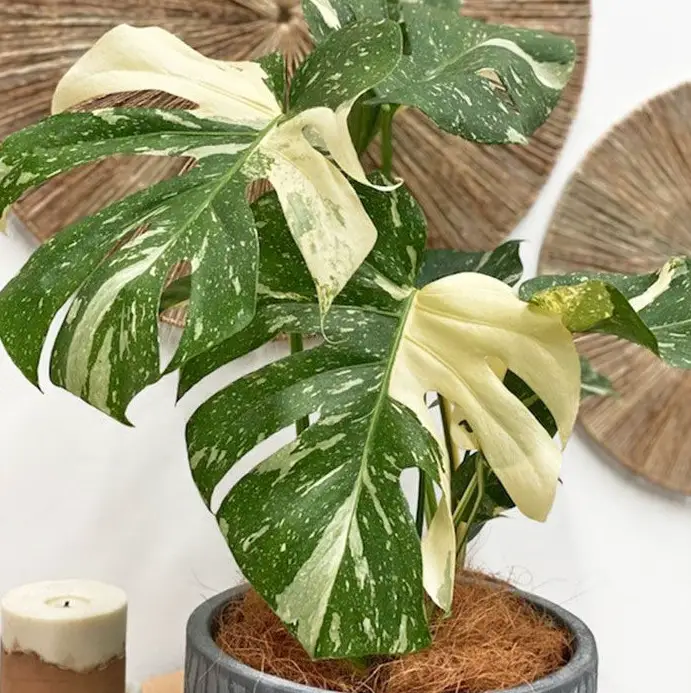
The variegated Monstera ‘Thai Constellation’, or Monstera Deliciosa ‘Thai Constellation’, features a heavenly-like marbled pattern adorning its large leaves. As with other Monstera varieties, its leaves will develop splits and holes as they mature. However, unlike natural variegations, this species was specifically developed in a Thai laboratory.
The rarity of the Monstera Thai Constellation stems from its lab creation, limited production, slow growth, and high demand. Cultivating these plants requires skill and patience, contributing to their scarcity in the market. With its preference for medium indirect light and weekly watering, this unique plant adds a touch of celestial elegance to any space.
Peruvian Form Monstera Obliqua
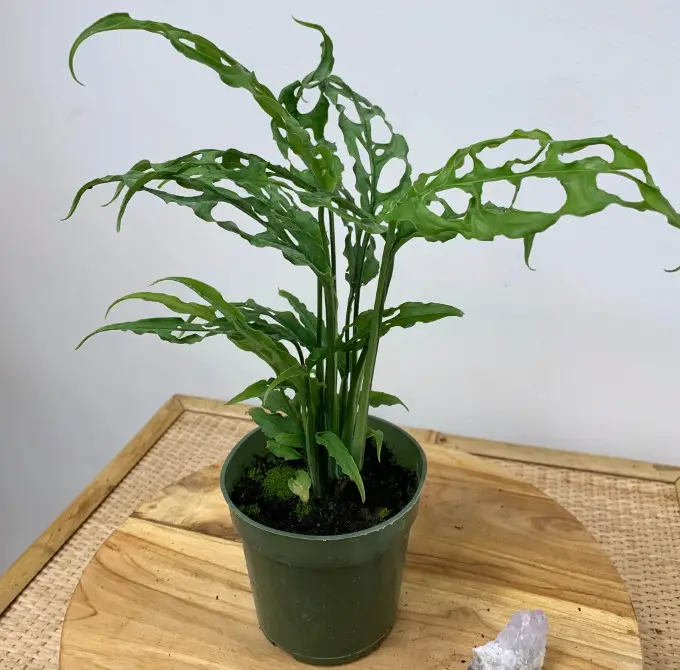
The Peruvian Form of Monstera Obliqua, scientifically known as Monstera Deliciosa Obliqua, stands out as an exceptionally rare and exquisite addition to any indoor garden. Its most distinguishing feature is its delicate, paper-thin leaves, often characterized by extensive fenestration, with up to 90% of the leaf being empty space.
Despite their resemblance to Monstera Adansonii, the Obliqua leaves are significantly thinner and more delicate. This rarity and unique beauty make it a prized possession among plant enthusiasts, demanding optimal care in medium indirect light to thrive.
Variegated Monstera ‘Monkey Leaf’
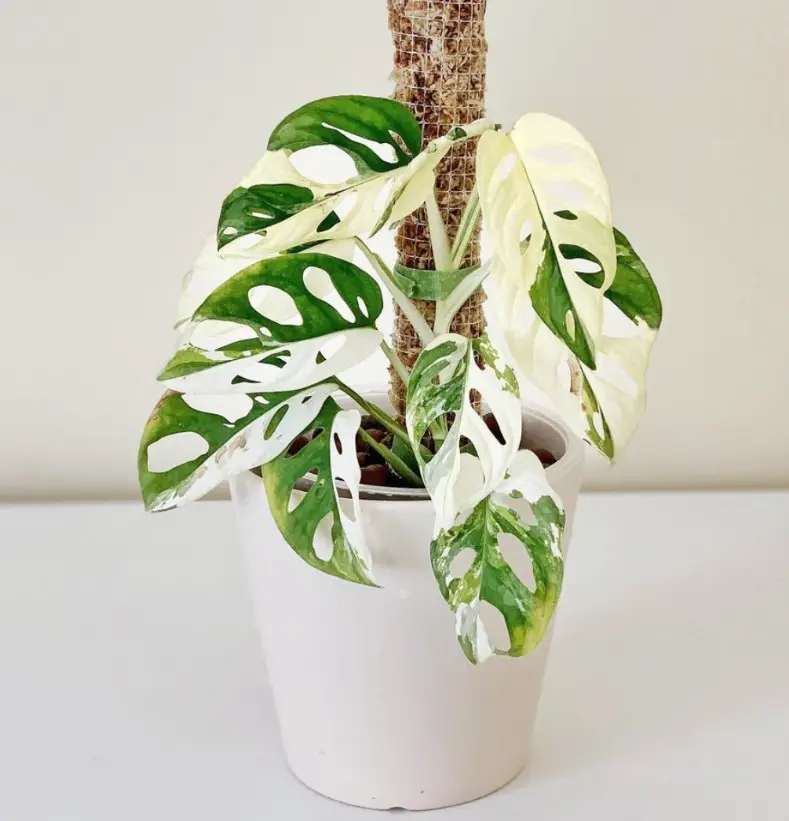
The Variegated Monstera ‘Monkey Leaf’, scientifically referred to as Monstera Adansonii Variegata Archipelago, often gets mistaken for the exceedingly rare Peruvian form Monstera Deliciosa Obliqua. Resembling its counterpart, the Adansonii variant displays large holes amidst its striking white-and-green swirled leaves.
Due to their sluggish growth and soaring demand, acquiring this species proves to be a challenging feat, rendering them rare and costly treasures among plant enthusiasts. Thriving best in indirect light with weekly watering, they make for beautiful additions to any indoor space.
Yellow Variegated Monstera
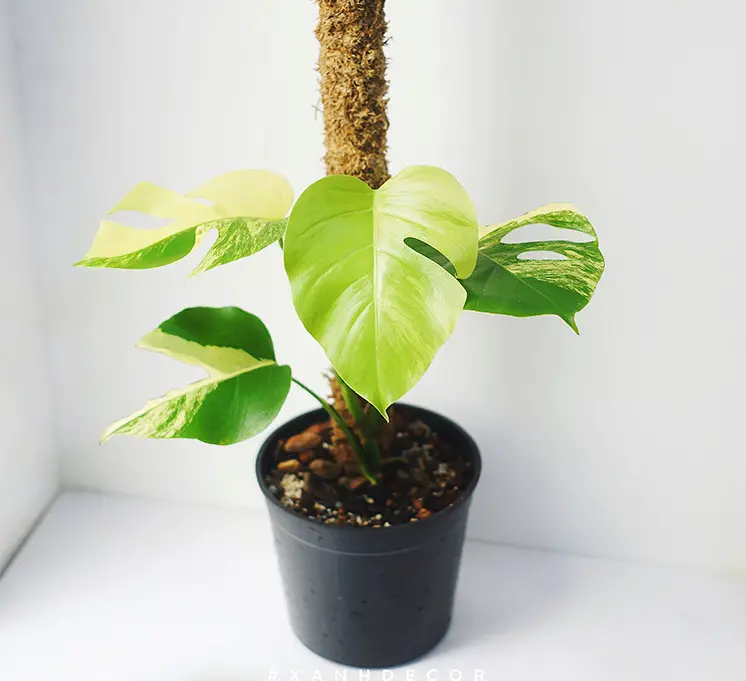
The Yellow Variegated Monstera, known as Monstera Borsigiana Aurea, thrives in apartment environments with its stunning appearance and fast-growing nature. This variety is not only aesthetically pleasing but also easy to maintain, requiring infrequent watering.
The rarity of Monstera Borsigiana Aurea stems from its unique yellow variegation, a result of rare occurrences such as mutations, viral infections, or chlorophyll deficiency. These factors make such variegated plants fragile and less likely to survive in the wild, contributing to their scarcity.
‘Silver Cloud’ Philodendron
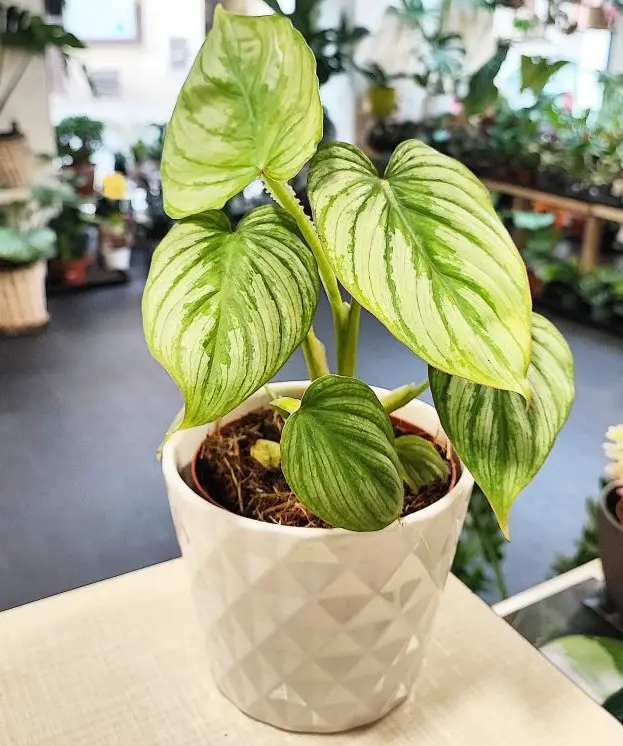
Given its nickname, the ‘Silver Cloud’ philodendron (scientifically named Philodendron ‘Mamei Silver’) is so named because of its remarkable silver variegation on its big, heart-shaped leaves. This is a rare plant that grows well inside and requires little maintenance.
The reason for the limited availability of Silver Cloud Philodendrons is because they are propagated through tissue culture, which frequently yields smaller and less colorful specimens than their wild counterparts. This attractive plant lends a touch of elegance to any indoor environment; it prefers strong indirect light and modest watering.
‘Milk Confetti’ Syngonium
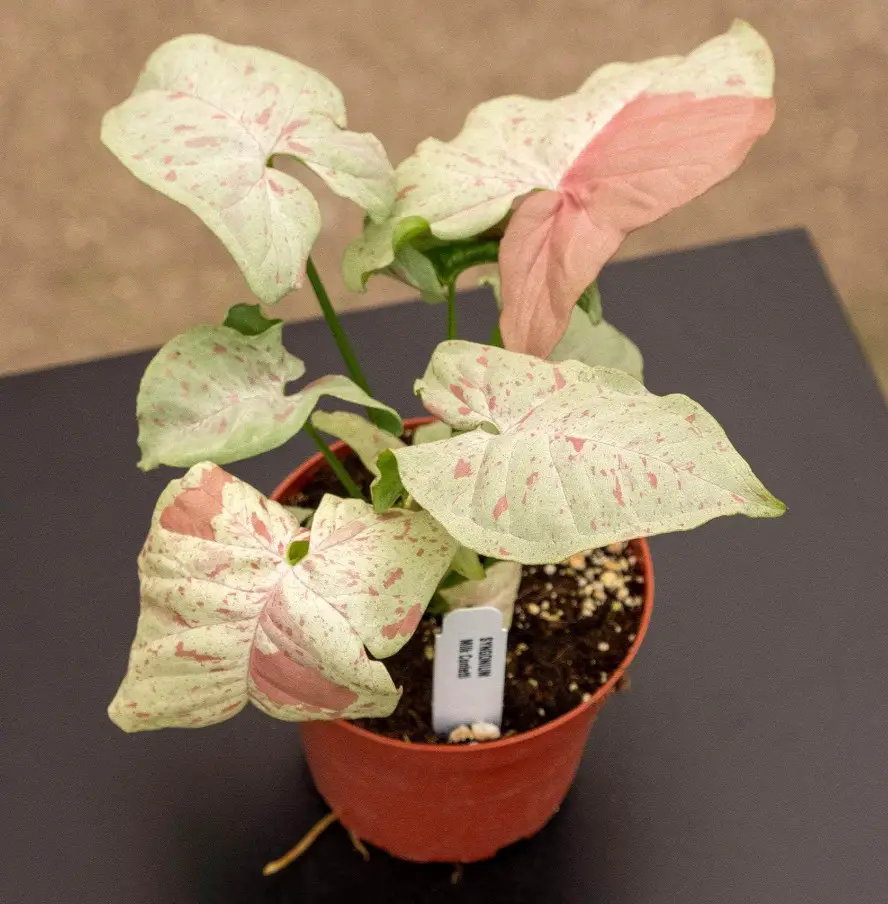
The ‘Milk Confetti’ Syngonium, a recent addition to the Syngonium Podophyllum family, is gaining popularity for its unique appearance. Its leaves, speckled with pink and light green hues, add a vibrant touch to any indoor setting, distinguishing it from traditional green houseplants.
Belonging to the Araceae family, this herbaceous evergreen thrives in part shade, making it suitable for various indoor environments. With a weekly watering regimen, the ‘Milk Confetti’ Syngonium promises to add charm and color to your living space.
‘White Princess’ Philodendron
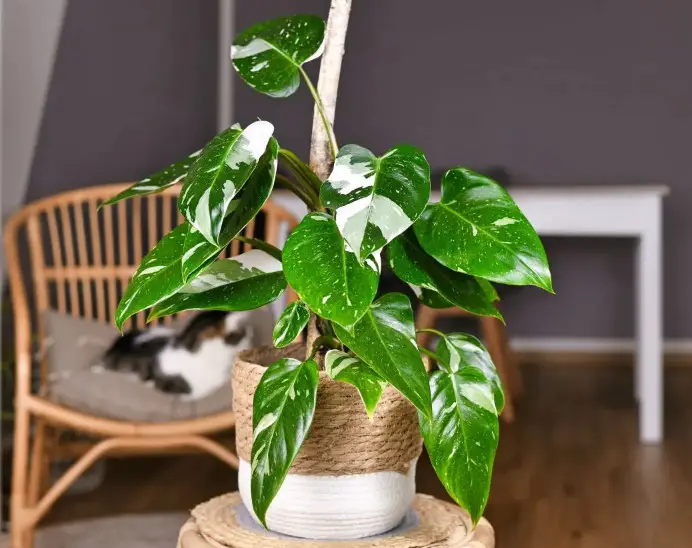
The ‘White Princess’ Philodendron, scientifically named Philodendron Erubescens ‘White Princess’, hails from the lush rainforests of South America. Renowned for its rare beauty, it showcases white variegated patches on its pointed green leaves, earning its regal title.
However, it’s often mistaken for similar varieties like the ‘White Wizard’ and ‘White Prince’. Thriving in bright indirect sunlight, this elegant houseplant requires watering on a weekly to twice-monthly basis to maintain its splendor.
Black Gold Philodendron

The Philodendron Melanochrysum, commonly called the Black Gold Philodendron, is renowned for its velvety, almost black foliage adorned with striking yellow veins. Despite its luxurious appearance, it’s relatively low-maintenance, thriving in bright indirect sunlight.
However, to support its climbing habit, it benefits from a totem or pole. Watering should be done when the top inch of soil feels dry to the touch, ensuring the plant’s optimal growth and health.
‘Gloriosum’ Philodendron
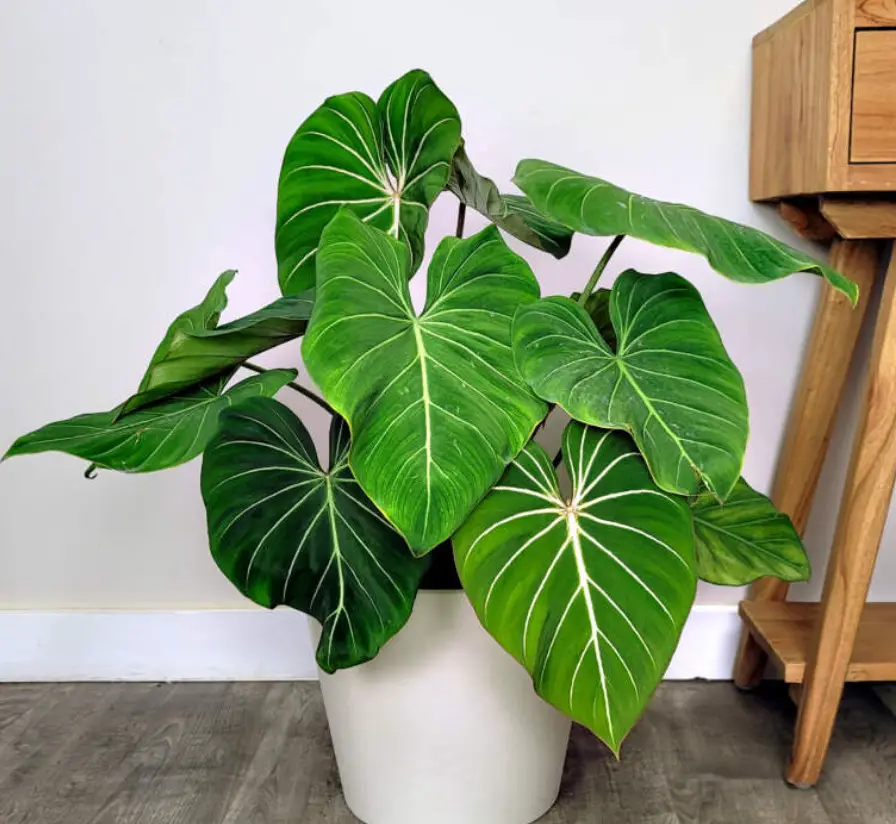
The ‘Gloriosum’ Philodendron, or Philodendron Gloriosum, is an exquisite and highly sought-after species that adds a touch of elegance to indoor gardens. Its lush, heart-shaped leaves boast a deep green hue and a velvety texture, making it a delight to behold and touch.
As a climbing plant, it tends to sprawl, requiring ample space to flourish. Providing bright indirect light and watering only when the top inch of soil is dry ensures its optimal growth and beauty.
Queen Anthurium
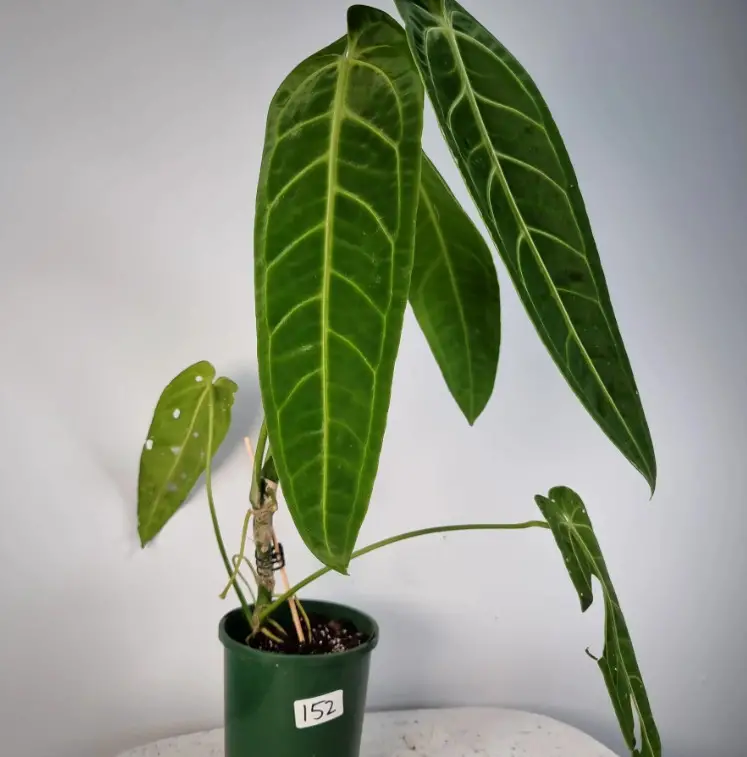
The Queen Anthurium, scientifically named Anthurium Warocqueanum, stands out as a majestic member of its genus. With its lush, dark green velvety leaves reaching up to four feet in length, it commands attention in any indoor space.
However, it demands careful attention, thriving best in high humidity levels exceeding 70%. For optimal growth, provide medium to bright indirect light and water weekly while ensuring frequent misting to maintain its regal beauty.






